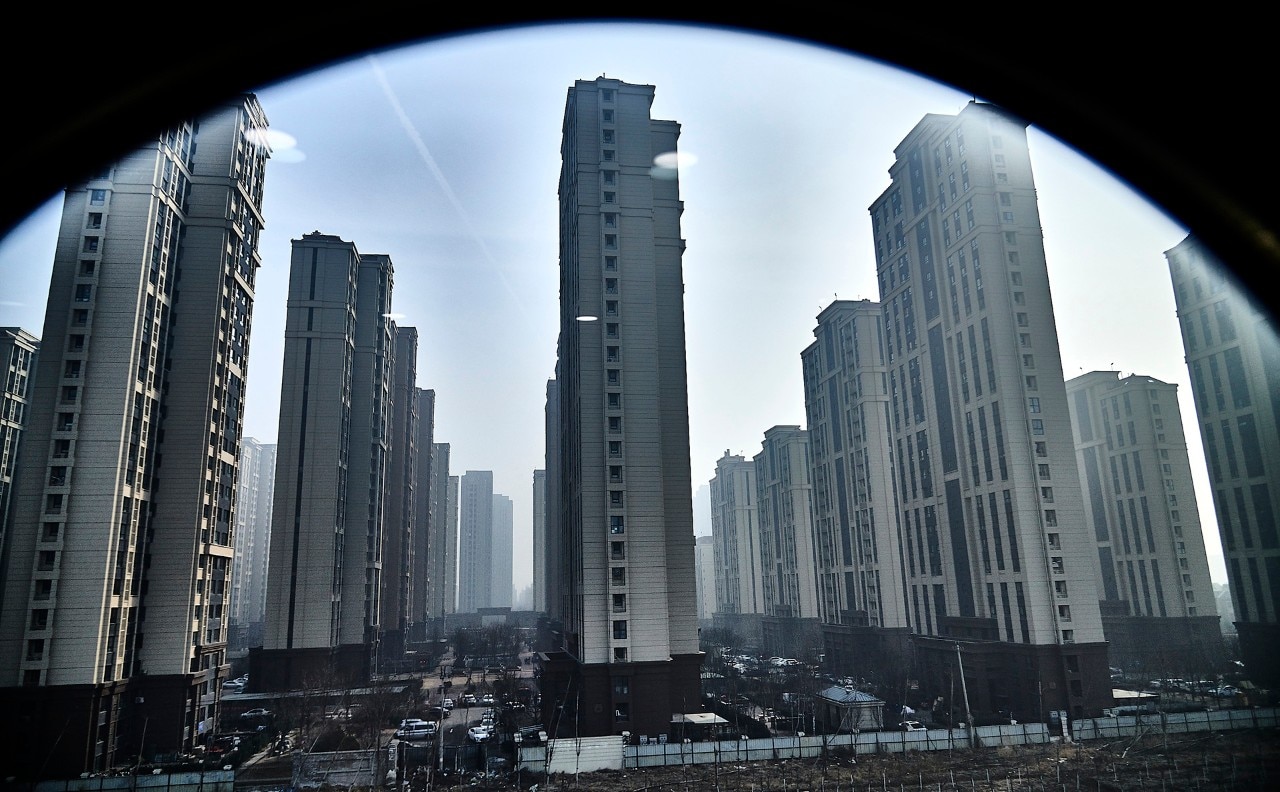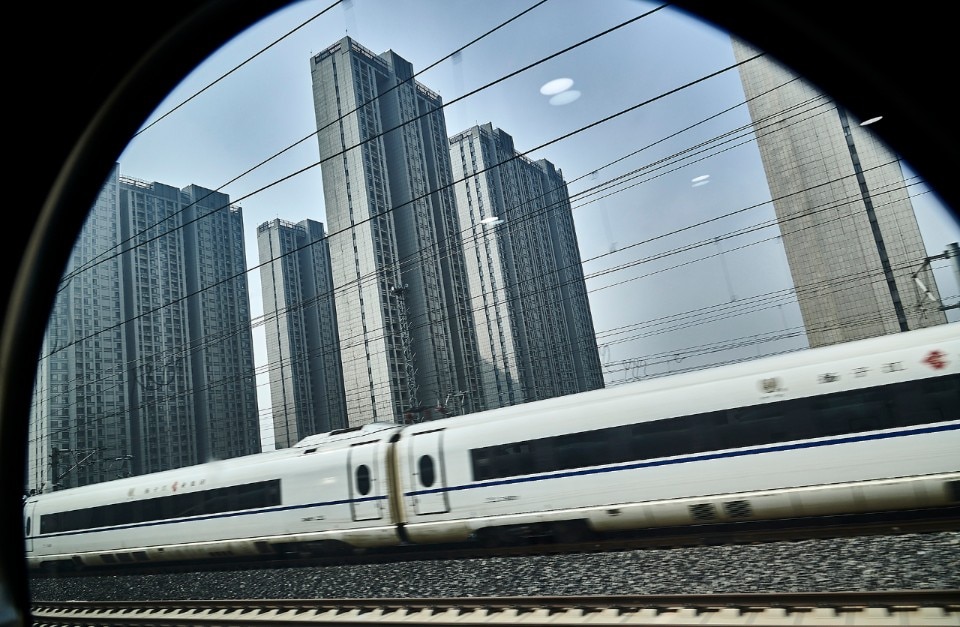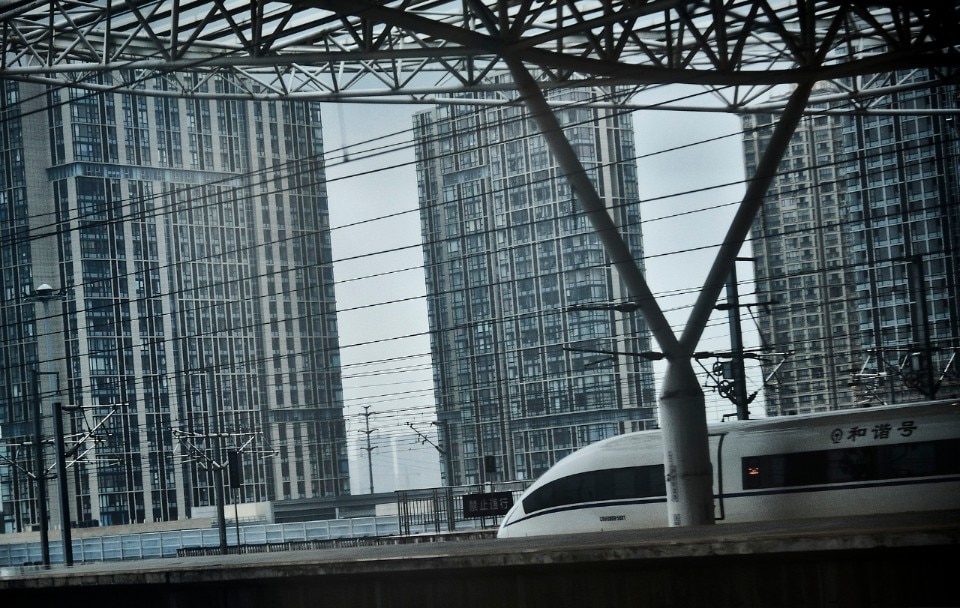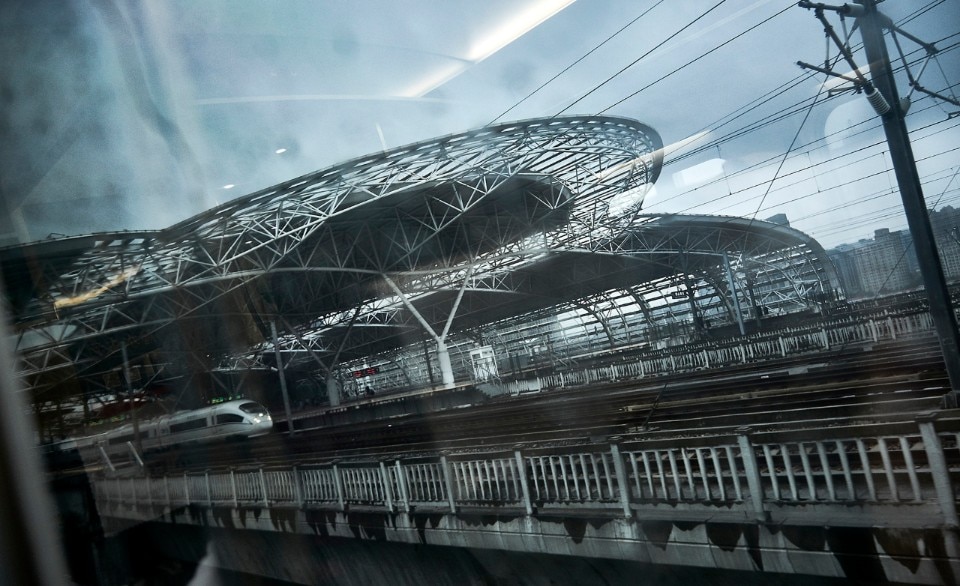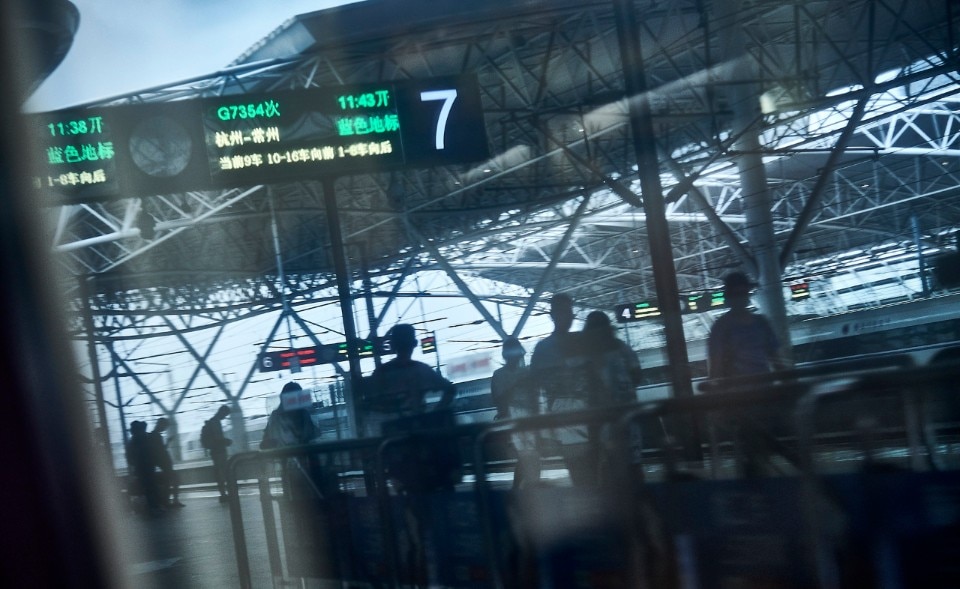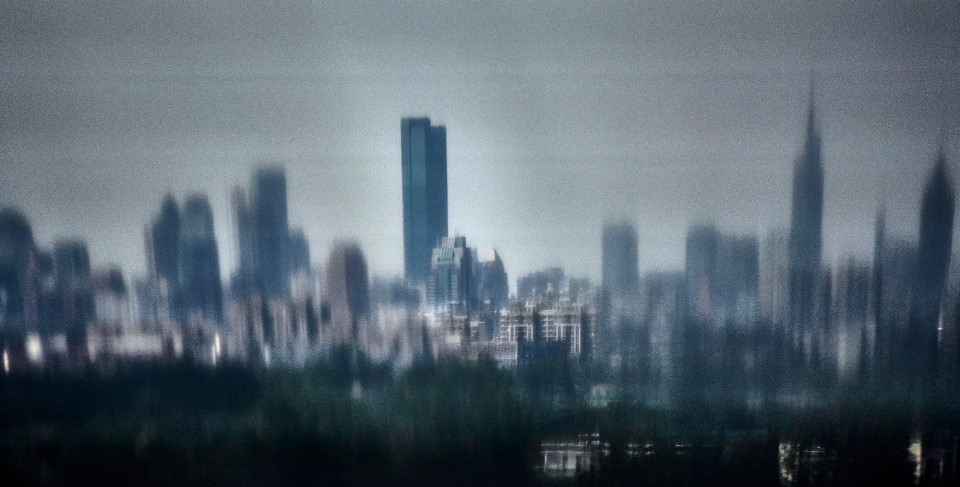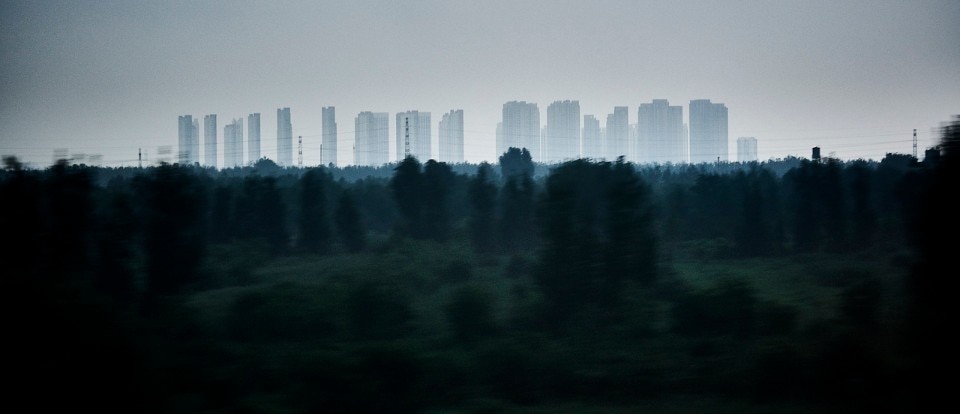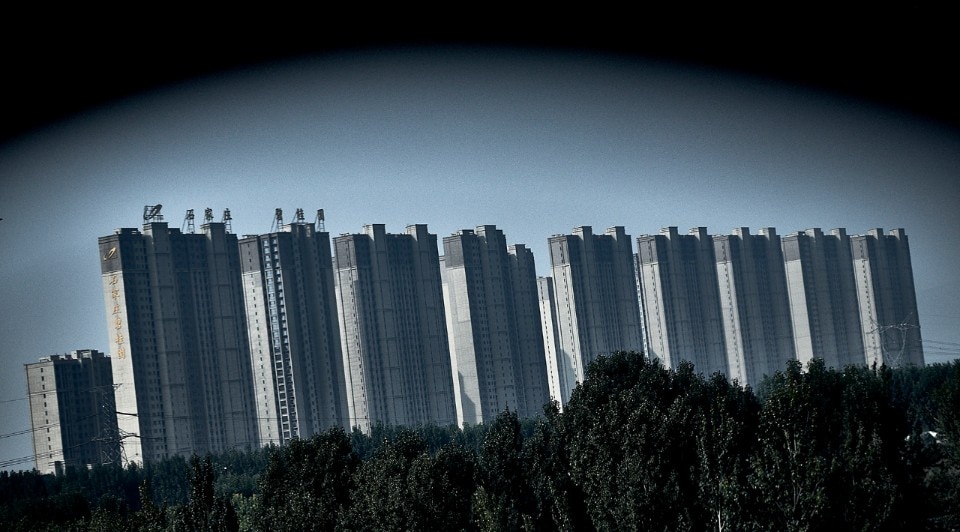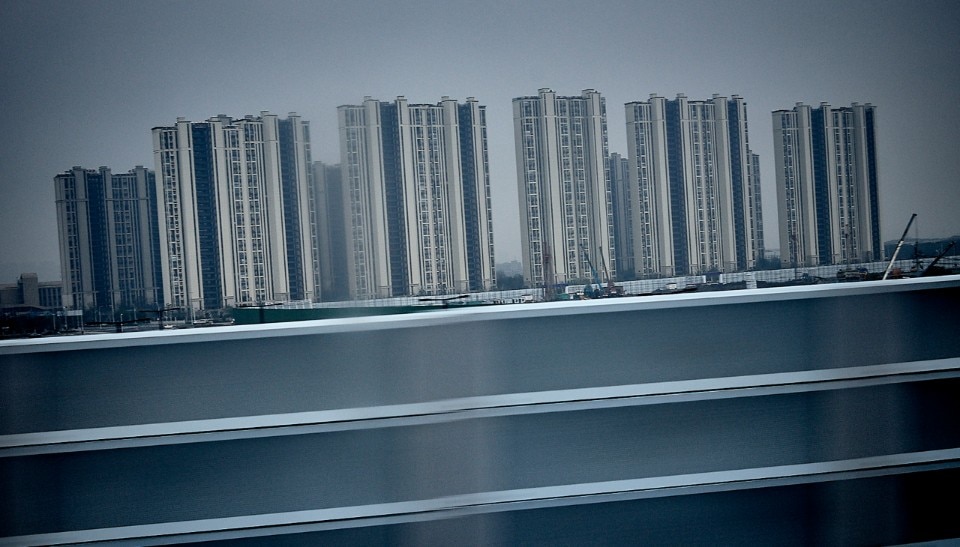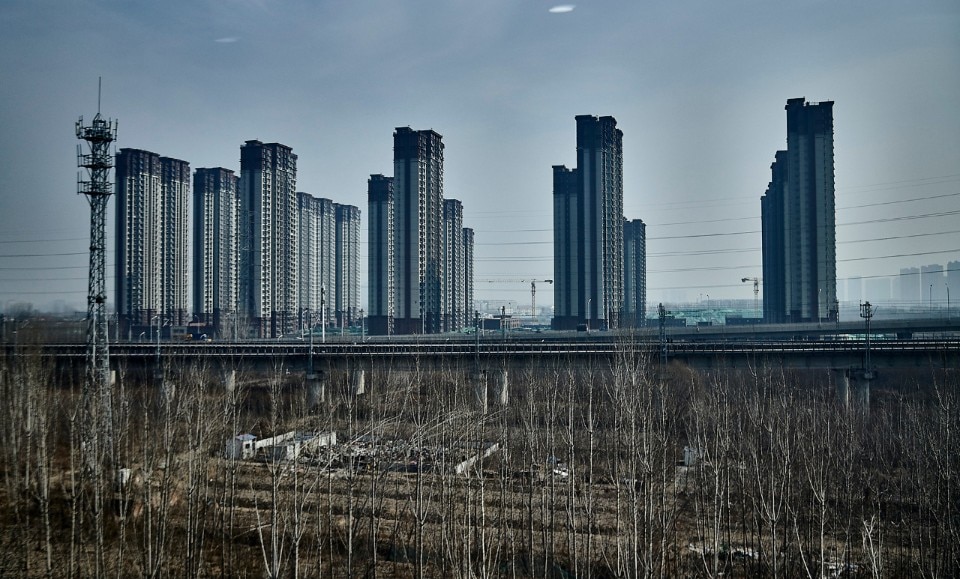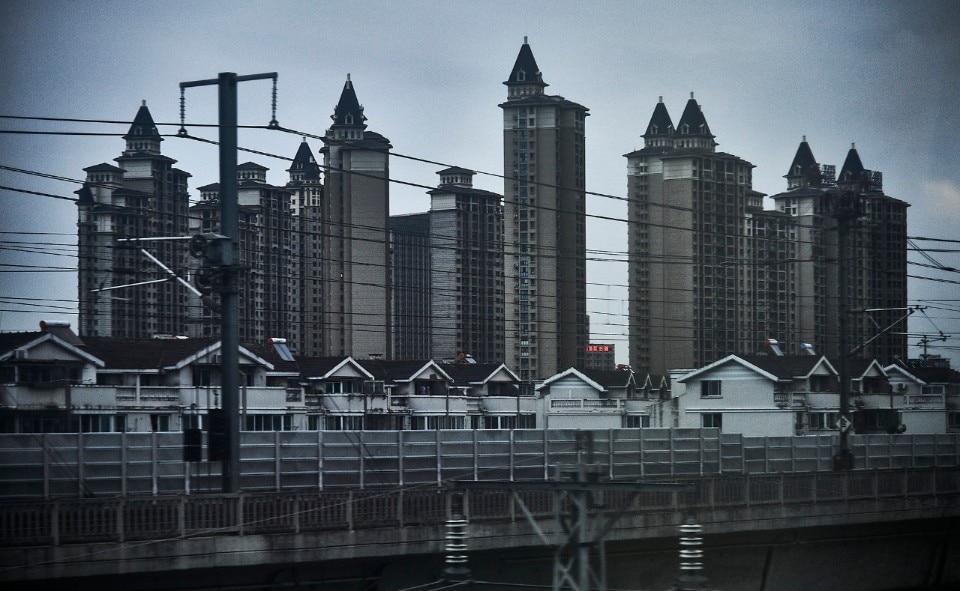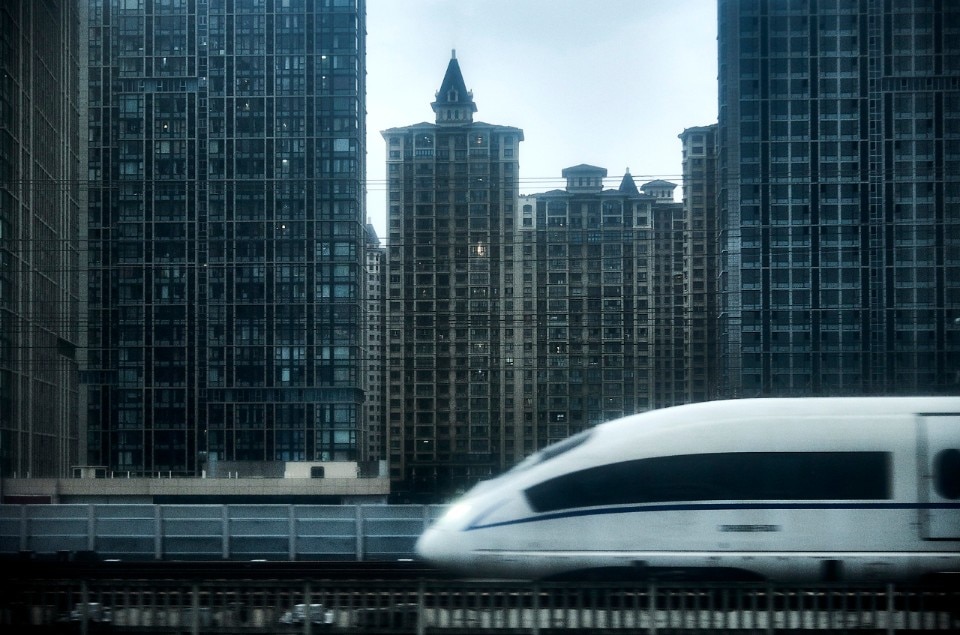What does it mean to cross China today?
If you do it on board one of the bullet trains that every day go back and forth 2800 times between the 550 cities connected by the largest high–speed railway network in the world, it means finding yourself immersed in an urban continuum of unexpected proportions, where tall towers of recent construction and all similar to each other represent almost the only form of visible landscape.
This is what Manuel Alvarez Diestro experienced over and over again for his latest project, High–Speed Cities, which led him to travel along some of the main railway corridors that connect 33 of the 34 provinces of the country. From Beijing to Shanghai, to Tianjin or Xian, then from Xian to Chengdu, from there to Chongqing and again from Shanghai to Wenzhou and from Guangzhou to Shenzhen, the Spanish photographer and director has sought and found a conceptual and visual connection between the speed of the trains on which he traveled and the dizzying speed with which Chinese cities are growing.
Chongqing, to give one of the most immediate examples, has gone from a population of 6 to 16 million only in the last ten years: pumped up by the communist government, above all on an economic level, as the new capital of the southwest, it will be part, together with Beijing, Shanghai, Guangzhou, Shenzhen and Tianjin, of a system of super–cities that will act as the backbone for the economic development of the western part of the country.
«Being in the middle of the mountains, the towers are not easily seen from the train,» Diestro explains, «but if you travel in the Beijing–Shanghai corridor, for example, for almost the entire journey you can experience a totally interconnected urban area, populated by similar–looking skyscrapers, all integrated into a single, seamless metropolitan area.»
Another interesting case is that of Xian, whose massive population growth is reflected in the hundreds of newly built towers that, for Diestro, contradict the original perception of a traditional city. After all, cities like Xian and Chongqing—though the latter is more in a maritime declination—are strategic in the development of the so-called Belt and Road Initiative (but in Chinese it sounds more like “one belt, one road”, and we talked about it on Domus #1033) that is drastically changing the country's appearance from a structural and logistical as well as a cultural and social point of view.
Despite, for example, the new master plan of Beijing aims to address typical metropolitan challenges such as overcrowding, uncontrolled expansion, pollution and destruction of cultural heritage, (exploiting among other things the already overused claim “less is more”, which also reverberates in a new campaign of birth control), it is clear that the plan to integrate in Beijing surrounding cities such as Tianjin and Shijiazhuang is on the one hand very ambitious but on the other hand also very dangerous for the preservation of the “local” dimension.
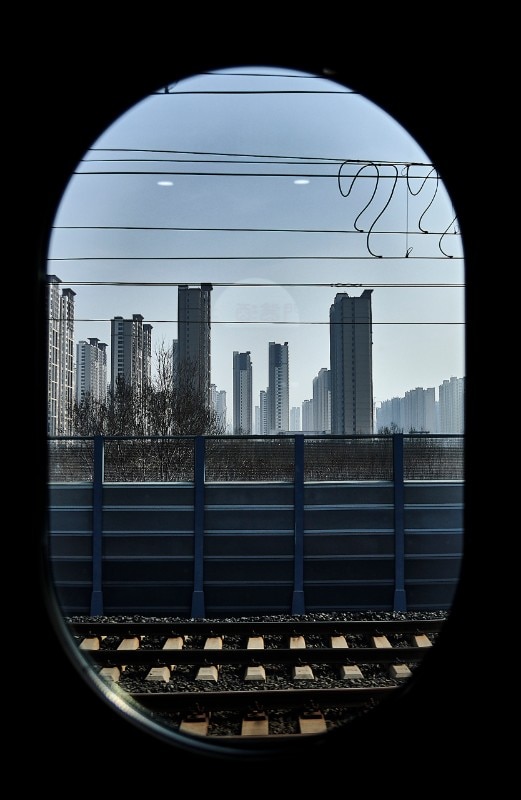
From the perspective of photographic language one could say that Diestro's images are reminiscent of a long tradition of photographs taken from a train. We need only think of Paul Fusco's RFK Funeral Train, which, among other things, portrays a country in mourning (the United States of the post–Robert Kennedy era) as a counterpoint to the birth of a new country, contemporary China precisely, driven by the laws of blind economic development rather than those of ethical humanism.
On the other hand, however, they are in turn almost the reverse of that Tokyo Compression with which Michael Wolf described today's Japan as a country under pressure: not at all focused on people, rather centered on a dense landscape that becomes the reflection of a society seen from within its pulsating transportation system, Diestro's photos are both impressionistic and expressionistic, and manage to convey the urgency of a world in progress that continually escapes and often breaks the banks of a univocal definition.
«For a photographer, this is an exhilarating experience because it’s difficult to control the composition of the images and even the adjustments of the camera. I particularly liked the dreamy atmosphere of Chinese megacities when you perceive them from a capsule where space and time are no longer recognizable.»
All this while the experiments on magnetic levitation transport (the first commercial network for trains that will reach 600 kilometers should be ready by 2025) and, on the other side of the ocean, those of Elon Musk's Hyperloop for Virgin (1200 Km/h potential, more than an airliner) already make the 350 kilometers per hour of bullet trains seem like prehistory.


